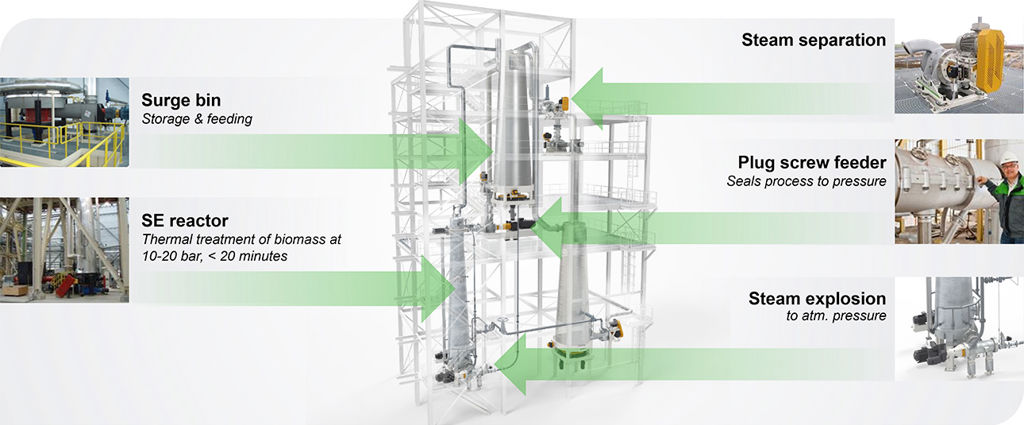Pretreatment BioTrac, Heat and Chemical Recovery
Pretreatment is one of the most critical and challenging process step. The BioTrac is a continuously operated system, designed for “steam explosion” of the biomass which basically means:
- Steam heating of ligno-cellulosic material followed by rapid de-pressurization
- Hemicelluloses decompose to monomers and lignin is softened
- The biomass fibre structure is partly destroyed at dicharge
- Fibres, soft lignin and sugars create an excellent raw-material for pelleting
- The steaming based process is very safe

Continuously operated pretreatment BioTrac reactor

Our expertise is at your service
Our focus is to bring your performance forward. Get in touch with us through our website, or through your local Valmet office.
Contact us